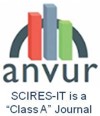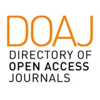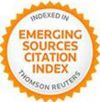Abstract
Ancient manuscripts are part of many collections belonging to historic libraries and museums: due to their fragile nature and to the difficulties to display most of their contents during exhibitions, their study is often complicated for scholars who also need generally special permissions to examine them, mostly for a limited time window. Beginning from these premises, this paper introduces the outcomes of the digital replication and presentation of three manuscripts related to Dante’s Divine Comedy, as proposed on a real exhibition, “Dall’Alma Mater al Mondo. Dante at the University of Bologna”, held in 2021. Some of the principles related to the production of their replicas and the fruition of their contents through dedicated applications targeted to visitors and scholars are presented, with care to the reproduction of details such as the ability to explore 3D replicas of detailed elected pages or to browse many of them on dedicated touch screens.
Keywords
Full Text:
PDFDOI: http://dx.doi.org/10.2423/i22394303v12n1p77
References
Ackermann, J. & Goesele, M. (2015). A survey of photometric stereo techniques. Foundations and Trends in Computer Graphics and Vision, 9(3-4), 149–254.
Akenine-Möller, T. (2018). Real-Time Rendering. 4th ed. Fourth edition. Boca Raton: Taylor & Francis, CRC Press.
Apollonio, F.I., Clini, P., Gaiani, M. & Perissa Torrini, A. (2015). La terza dimensione dell'Uomo vitruviano di Leonardo. Disegnare Idee Immagini” 50(2015), 48-59. Roma: Gangemi Editore.
Apollonio, F.I., Bacci, G., Ballabeni, A., Foschi, R., Gaiani, M., & Garagnani, S. (2019). InSight Leonardo - ISLE. In P. Marani (Ed.), Leonardo, anatomia dei disegni, catalogo della mostra (pp. 31-45). Museo di Palazzo Poggi, Bologna: Sistema Museale di Ateneo Università di Bologna.
Apollonio, F.I., Fantini, F., Garagnani, S., & Gaiani, M. (2021). A Photogrammetry-Based Workflow for the Accurate 3D Construction and Visualization of Museums Assets. Remote Sensing 13(3), 486.
Apollonio, F.I., Foschi, R., Gaiani, M., & Garagnani, S. (2021). How to Analyze, Preserve, and Communicate Leonardo's Drawing? A Solution to Visualize in RTR Fine Art Graphics Established from “the Best Sense”. Journal on Computing and Cultural Heritage, 14(3), Article 36.
Bartell, F.O., Dereniak, E.L., & Wolfe, W.L. (1980). The theory and measurement of bidirectional reflectance distribution function (BRDF) and bidirectional transmittance distribution function (BTDF). In Proceedings of SPIE, 257 (pp. 154-160).
Burley, B. (2012). Physically-based shading at Disney, course notes. In SIGGRAPH ’12 Courses, ACM. New York, NY, Article 10.
Citti, F. (2022). Prefazione. In G. Ledda, G. & A. Zironi (Eds.), Dall'Alma Mater al mondo. Dante all'Università di Bologna. Bologna, Bologna University Press.
Delle Querce, E. (1287). No me poriano zamai far emenda, Memoriali.
Donner, C. & Wann Jensen, H. (2005). Light diffusion in multi-layered translucent materials. ACM Trans. Graph. 24(3), 1032–1039.
Doppioslash, C. (2018). Physically Based Shader Development for Unity 2017, Apress.
Dorsey, J., Rushmeier, H., & Sillion, F. (2007). Digital modeling of material appearance. Amsterdam: Elsevier.
Eberly, D.H. (2015). 3D Game Engine Design: A Practical Approach to Real-Time Computer Graphics. Boca Raton: Taylor & Francis, CRC Press.
Ferwerda, J.A., & Darling, B.A. 2013. Tangible Images: Bridging the Real and Virtual Worlds. In CCIW 2013 proceedings. Lecture Notes in Computer Science, 7786. Springer, Berlin, Heidelberg, 13-24.
Flamma, G. & Mantovani, S. Internal summary for Manuscript no. 589 (134 Aula II A), Bologna, Biblioteca Universitaria.
Frati, C. (1923). I codici danteschi della Biblioteca universitaria di Bologna. Con IV appendici e XIV facsimili. Firenze: Leo Olschki ed., vii-18.
Gaiani, M., Apollonio, F.I., & Clini, P. (2015). Innovative approach to the digital documentation and rendering of the total appearance of fine drawings and its validation on Leonardo's Vitruvian Man. Journal of Cultural Heritage, (16)6, 805-812.
Gaiani, M., & Ballabeni, A. (2018). SHAFT (SAT & HUE Adaptive Fine Tuning), a new automated solution for target-based color correction. In V. Marchiafava, & L. Luzzatto (Eds.), Colour and Colorimetry Multidisciplinay Contributions, vol. XIVB, (pp. 69-80). Milano: Gruppo del Colore - Associazione Italiana Colore.
Gaiani, M., Apollonio, F.I., Bacci, G., Ballabeni, A., Bozzola, M., Foschi, R., Garagnani, S., & Palermo, R. (2019). Seeing inside drawings: a system for analysing, conserving, understanding and communicating Leonardo’s drawings. In R. Barsanti (ed.), Leonardo in Vinci. At the origins of the genius (pp. 207-240), Milano: Giunti Editore.
Gardner, A., Tchou, C., Hawkins, T., Debevec, P. E. (2003). Linear light source reflectometry. In ACM SIGGRAPH 2003 Papers, 749-758.
Google Arts and Culture. Retrieved from https://artsandculture.google.com/
Guarnera, D., Guarnera, G.C., Ghosh, A., Denk, C., & Glencross, M. (2016). BRDF Representation and Acquisition. Computer Graphics Forum, 35(2), 625-650.
Hanrahan, P. & Krueger, W. (1993). Reflection from layered surfaces due to subsurface scattering. In Proceedings of the 20th Annual Conference on Computer Graphics and Interactive Techniques (SIGGRAPH 93) pp. 165-174. ACM, New York.
Korunoski, M., Gushev, M. & Zdraveski, V. (2019). Programmable vs. Fixed-Function Pipeline in Real-Time Computer Graphics. In IEEE EUROCON 2019 -18th International Conference on Smart Technologies, 1–5. Novi Sad, Serbia: IEEE.
Larsen, R. (2007). Introduction to damage and damage assessment of parchment. Improved damage assessment of parchment (IDAP): assessment, data collection and sharing of knowledge. European Commission, Directorate-General for Environment, 17–22.
Ledda, G. & Zironi, A. (2022). Dall'Alma Mater al mondo. Dante all'Università di Bologna, Bologna, Bologna University Press, 2022, pp. 337
Longhi, R. (1950). Proposta per una critica d’arte, Paragone, 1, p.16.
Malzbender, T., Gelb, D., & Wolters, H. (2001). Polynomial texture maps. In Proceedings of Siggraph 01. Computer Graphics (SIGGRAPH 01: 28th International Conference on Computer Graphics and Interactive Techniques (pp. 519-528). New York: ACM.
Meseth, J., Hempel, S., Weidlich, A., Fyffe, L., Fyffe, G., Miller, C., Carroll, P., Debevec, P.E. (2012). Improved Linear Light Source material reflectance scanning. In Proceedings of the 39th annual conference on Computer graphics and interactive techniques (SIGGRAPH ’12) Talks, Article 11, 1.
Nicodemus, F.E. (1965). Directional reflectance and emissivity of an opaque surface. Applied Optics, 4(7), 767-775.
Operation Nigh Watch at Rijks Museum. Retrieved from https://www.rijksmuseum.nl/en/stories/operation-night-watch/story/ultra-high-resolution-photo
Papas, M., De Mesa, K., & Wann Jensen, H. (2014). A Physically Based BSDF for Modeling the Appearance of Paper. Computer Graphics Forum, 33(4), 133-142.
Relio2 technical sheet. Retrieved from http://www.relio.it
Salama, R., & ElSayed, M. (2018). Basic Elements and Characteristics of Game Engine. Global Journal of Computer Sciences: Theory and Research 8(3), 126–31.
Schlick, C. (1994). An Inexpensive BRDF Model for Physically Based Rendering. Computer Graphics Forum, 13(3), 233–246.
Schweibenz, W. (1998). The Virtual Museum: New Perspectives for Museums to Present Objects and Information Using the Internet as a Knowledge Base and Communication System. In H. Zimmermann, & H. Schramm (Eds.), Knowledge Management und Kommunikationssysteme, Workflow Management, Multimedia, Knowledge Transfer. Proceedings of the 6th ISI Conference, Prague, November 1998 (pp. 185-200). Konstanz: UKV.
Simone, G., Gaiani, M., Ballabeni, A., & Rizzi, A. (2021). Complex process of image color correction: a test of a target-based framework. J. Opt. Soc. Am. A 38, 663-674.
Toledo, R. & Levy, B. (2004). Extending the graphic pipeline with new GPU-accelerated primitives. Tech report, INRIA.
Torrance, K. & Sparrow, E. (1967). Theory for off-specular reflection from roughened surfaces. J. Optical Soc. America, 57, 1105–1114.
TurnJs, a JavaScript library that will make your content look like a real book. Retrieved from http://www.turnjs.com/
Unity 3D Game engine. Retrieved from http://www.unity3d.com.
Valzano, V., & Sartor, G. (2021). Dante as an ecologist and poet in the world. “Divine illustrations” by Gustave Doré. An open access multimedia project. SCIRES‐IT ‐ SCIentific RESearch and Information Technology, 11(2), 41-56. Retrieved from http://dx.doi.org/10.2423/i22394303v11n2p41
Walter, B., Marschner, S.R., Li, H., & Torrance, K.E. (2007). Microfacet models for refraction through rough surfaces. Rendering techniques. In Proceedings of Eurographics Symposium on Rendering (pp. 195-206), ESGR2007
Watteeuw, L., Hameeuw, H., Vandermeulen, B., Van der Perre, A., Boschloos, V., Delvaux, L., Proesmans, M., Van Bos, M., & Van Gool, L. (2016). Light, shadows and surface characteristics: the multispectral Portable Light Dome. Appl. Phys. A 122, 976-983.
Westin, S.H., Arvo, J., & Torrance, K.E. (1992). Predicting reflectance functions from complex surfaces. In Proceedings of the 19th Annual Conference on Computer Graphics and Interactive Techniques (SIGGRAPH ‘92) (pp. 255-264). New York: ACM.
Woodham, R.J. (1980). Photometric method for determining surface orientation from multiple images. Opt. Eng., 19, 139–144.
Xiong, Y., (2022). PSBox. Retrieved from https://www.mathworks.com/matlabcentral /fileexchange/45250-psbox.
Zarrad, A. (2018). Game Engine Solutions. In D. Cvetković (Ed.), Simulation and Gaming. IntechOpen.
Article Metrics
Metrics powered by PLOS ALM
Refbacks
- There are currently no refbacks.
Copyright (c) 2022 Marco Gaiani, Simone Garagnani, Michele Zannoni

This work is licensed under a Creative Commons Attribution-NonCommercial-NoDerivatives 4.0 International License.
SCIRES-IT, e-ISSN 2239-4303
Journal founded by Virginia Valzano






